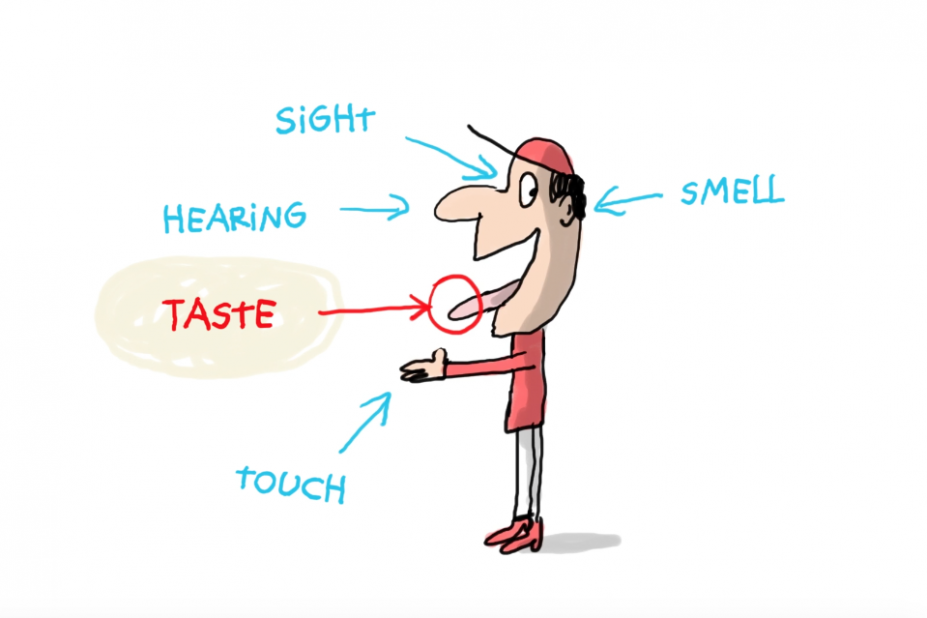If you can tell the flavor of food, it’s thanks to one of your 5 senses: taste.
Things don’t have the same taste: cherries are sweet, lemons are sour, artichokes bitter and olives salty. These are basic flavors…
… that you discovered through the amniotic fluid in your mummy’s tummy, long before you were born.
How does taste work?
When you eat, the molecules of the food mix with your saliva and let out the taste.
Then, this taste is picked up by the cells of thousands of taste buds on your tongue.
But that’s not all! Food molecules also give off smells which go from your throat to other sensors, in your nose.
Try it! If you hold your nose, it’s quite hard to taste anything!
Taste and smell information is then sent to your brain, which analyses and memorises it.





 Retour
Retour